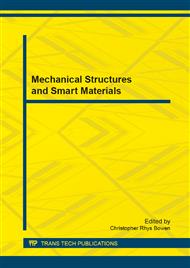p.80
p.84
p.90
p.94
p.98
p.102
p.106
p.110
p.114
A Preliminary Study on the Anti-Mosquito Nanocapsule
Abstract:
Anti-mosquito nanocapsules were prepared using the copolymer of styrene (ST) and ethyl acrylate (EA) as wall and deet as core by micro-emulsion polymerization. The mean particle size of nanocapsules was about 424nm and the loading of deet was about 73% under the conditions of 2% SDS as emulsifier and the ratio of core/wall 1:1. Scanning electron microscopy and laser particle size analyzer were employed to characterize the nanocapsules.
Info:
Periodical:
Pages:
98-101
Citation:
Online since:
January 2014
Authors:
Keywords:
Price:
Сopyright:
© 2014 Trans Tech Publications Ltd. All Rights Reserved
Share:
Citation:


